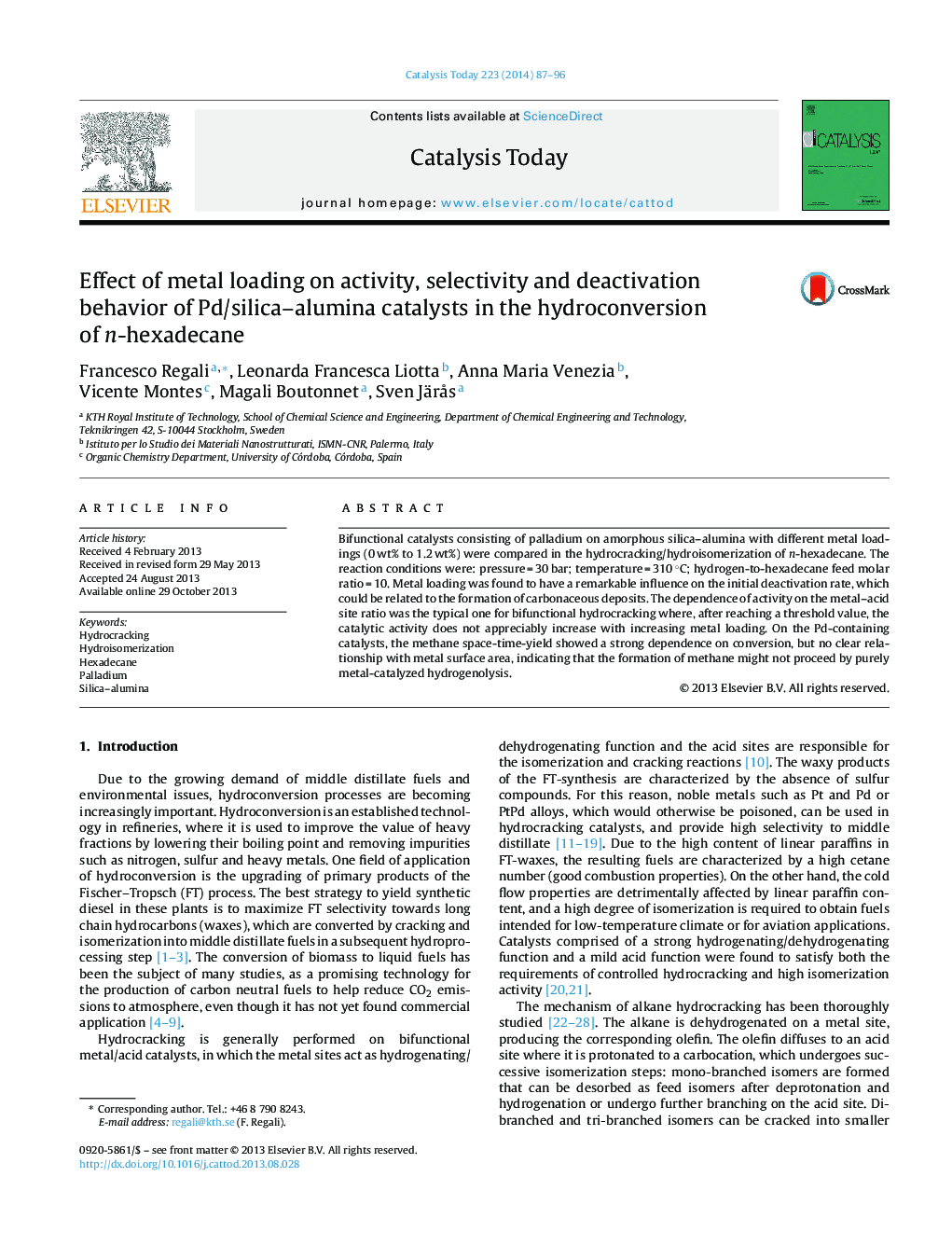| Article ID | Journal | Published Year | Pages | File Type |
|---|---|---|---|---|
| 54732 | Catalysis Today | 2014 | 10 Pages |
•Pd/silica–alumina catalysts were tested in the hydroconversion of n-hexadecane.•Metal loading showed a remarkable influence on the initial deactivation rate.•Initial deactivation could be related to coke formation.•Sintering of the metal particles was limited.•Catalytic activity plateaus after reaching a threshold value of palladium loading.•Methane formation is not correlated to Pd surface area.
Bifunctional catalysts consisting of palladium on amorphous silica–alumina with different metal loadings (0 wt% to 1.2 wt%) were compared in the hydrocracking/hydroisomerization of n-hexadecane. The reaction conditions were: pressure = 30 bar; temperature = 310 °C; hydrogen-to-hexadecane feed molar ratio = 10. Metal loading was found to have a remarkable influence on the initial deactivation rate, which could be related to the formation of carbonaceous deposits. The dependence of activity on the metal–acid site ratio was the typical one for bifunctional hydrocracking where, after reaching a threshold value, the catalytic activity does not appreciably increase with increasing metal loading. On the Pd-containing catalysts, the methane space-time-yield showed a strong dependence on conversion, but no clear relationship with metal surface area, indicating that the formation of methane might not proceed by purely metal-catalyzed hydrogenolysis.
Graphical abstractFigure optionsDownload full-size imageDownload high-quality image (174 K)Download as PowerPoint slide
